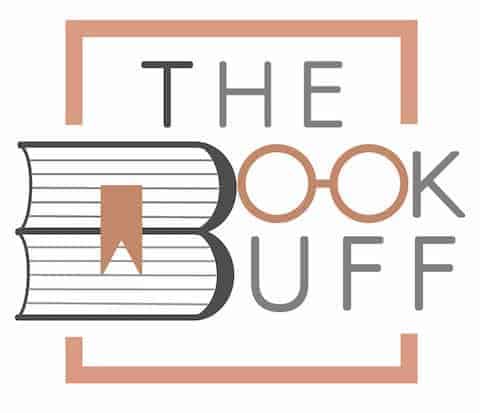The Engineer’s Wife by Tracey Wood | TheBookBuff Review!
Disclosure: This post may contain affiliate links. – meaning I may get a commission if you decide to purchase through my links, at no additional cost to you.
So I recently grabbed a copy of ‘The Engineer’s Wife’ by debut author Tracy Enerson Wood. I was fascinated by the idea of traveling back in time, into the 1800s, with a wonderful and strong heroine in tow.
What struck me was the idea of her being made in charge of building a one-of-a-kind, multi-million dollar bridge with zero training! How does one even start? How does one take responsibility for the hundreds of workers involved? What about the moral responsibility of the civilians who will use this bridge? Also, why chase a dream for 11 years when it actually isn’t even your own?
These questions had me gripped as I selected this book last week.
The Engineer’s Wife
Author: Tracey Enerson Wood
Publish date: August 1, 2020
Publisher: Lume Books
Category: Historical Fiction | Women’s Fiction
Book Review

Rating: 3/5
Verdict
If you would like to read a romance novel set in the 1800s, and in the backdrop of suspension bridge engineering, take a chance with this one. It is an amusing account of a strong yet flawed heroine who spends 11 years chasing and fulfilling her husband’s dream.
If, however, you want to use this book to understand the history of the iconic Brooklyn Bridge (USA) and the unique Roebling family who built it – skip ahead! This is more women’s fiction than historical fiction.
Plotline:
This is a story about a woman, Emily Roebling, who wants to make a mark in a man’s world. Set in the late 1800s, this is a time when it was illegal to educate yourself in science, maths, law – essentially anything that didn’t otherwise promote being a good wife and mother. It was even illegal for women to wear formal pants or trousers!
Emily, we learn, is a strong-headed young woman who wants to join the women’s movement for the right to vote. Marriage however carries her into the world of engineering. As a reader, we learn of her intellect and emotional strength. In this particular book, her character does come across as very human and, at times, flawed.
As wife to Washington Roebling, she inherits a bridge project – the Brooklyn bridge – which society believes she is ill-suited for. Yet, she draws strength from her husband and, in time, a central character outside her marriage – a story device that the author only discloses in the afterword is pure fiction.
Even though young and untrained, Emily is forced to blaze a trail as she stands in for her husband – initially as a messenger and then pseudo-engineer.
You admire Washington Roebling who stands so secure in letting a woman help lead a technical project, but is that a choice he makes for business or for love? Would he have reacted differently if he wasn’t stricken by ill health? Was he threatened ever by Emily’s candor and apparent disregard for propriety? These are questions that I leave you to ponder over.
Another aspect to consider is — was it even correct for Emily to have been tasked a job she was not even trained for? A job where you’re responsible for hundreds of thousands of lives.
If she wasn’t his wife who was challenging convention but say the untrained son – would I have still cheered on for his success? Isn’t it nepotism when you choose your successor basis family relationship rather than merit? These again are questions one is left to conclude as a reader.
Since there is quite a bit of fiction with respect to the characters, I would recommend this as a period romance/drama instead of historical fiction for your perusal.
My Opinion:
I believe if the author could have disclosed well in advance that the plotline is largely fiction, then I wouldn’t have approached it with an expectation of learning about the history of the Roebling family.
The whiff of a possible paramour including several key triggers for Emily’s emotional reactions are fiction. Why taint her character and reputation for the sake of a story? I didn’t quite understand the purpose. Maybe the author can include an explanation in later editions.
Another character I wanted to know deeper was that of Washington Roebling – who is the real Chief Engineer. What we know is that he has German roots, as his father moved to the Americas from Prussia. But what drove him to be who he was? My research reveals that Washington had quite a brutal childhood and a skewed father-son relationship. War had left him with emotional scars. Since I was searching for historic significance, I missed these references.
(In the backstory section you can read more about what my research reveals about Washington Roebling and his genius father, John A Roebling.)
That said, this is a debut novel and writing takes effort. So I appreciate Tracey for her effort, and for reminding us of a strong heroine in Emily Roebling – a woman who should not be easily forgotten.
How to Buy the Book?
The book is easily available on Amazon.
Here is the link to the book:
The Engineer’s Wife by Tracey Enerson Wood [Amazon link – opens up in another tab]
I like to buy ebooks, as I have an overflowing mini library at home. If you’re someone like me and if you would also like to read it on Kindle, you can find the book on this link – Kindle Version [Amazon Link – opens in another tab]
Backstory
John A Roebling was a German immigrant and was a bit of a mad genius. He invented the steel wire rope. This steel cable was widely used and still is seen in suspension bridges, ski lifts, and elevators. In fact, the OTIS elevator in the Eiffel Tower used this as well. It even was used by the Wright Brothers in the first-ever plane that flew.
My web research reveals that John had an odd understanding of what it meant to be a parent, and subjected his children to ice-cold water treatments instead of getting medical help if the children fell ill. Ironically, his misguided water therapy also played a part in his own death. He contracted tetanus as unboiled well water was poured on his open wounds.
Washington A Roebling was the eldest son and a civil engineer by training. He was in the army and suffered from, what we would call today, post-traumatic stress disorder (PTSD). Washington Roebling lived a long life despite having the ‘bends’. He married again after Emily’s death at the age of 59.
The Roebling family is behind the construction of two of the most photographed suspension bridges in the USA – Brooklyn Bridge, New York, and Golden Gate Bridge, San Francisco.
During the construction of the Brooklyn Bridge, over 100 workers contracted the “caisson disease”. It became one of the more widely documented cases in the 19th century. The sickness was termed by the physician then as: The Grecian Bends or just the ‘bends’ as those afflicted by this disease usually stooped over similar to the dance maneuver by the same name.
More Information
If you want to read more about Washington Roebling with a more research / historic lens then look up: Chief Engineer: The Man Who Built the Brooklyn Bridge by Erica Wagner [on Amazon].
You can also view a virtual program ‘Bridges Across America: The Impact of John Roebling and the Roebling Family’ [Link to the Virtual Program on YouTube] by Richard Haw who wrote the book, Engineering America: The Life and Times of John Roebling [on Amazon].
If you want to visit the old steel mills and really experience history then visit the Roebling Museum
Questions for the Book Club
(IMP: SPOILER ALERT, visit this section only after you’ve read the book):
- Do you think Washington Roebling was selfish in appointing his wife, Emily Roebling, the job of overseeing the construction of the Brooklyn Bridge?
- If Emily Roebling had acted on her instincts and stepped out of her marriage, would she have hurt her own legacy and the women’s movement she supported?
- Emily Roebling received a certificate in business law at the New York University. Do you believe she would have been able to do so without the Roebling family name? Is that why she chose to stay back?
- Is it nepotism when you choose your successor basis family relationship rather than merit? Do you support Washington’s decision? Would you do the same if you were in Washington’s position?
- Do you believe that the liaison between Emily and PT was a fair inclusion in the story?
Disclaimer: Thanks to #NetGalley for #TheEngineersWife an ARC in exchange for an honest review.

About the Author
Akansha is a former business journalist and a seasoned communications professional. She is the founder of TheBookBuff, an avid storyteller, and a lifelong biblophile! Check out her profile page to know more about Akansha.


![Why is Reading Good for You? [With 21 Key Benefits!]](https://thebookbuff.com/wp-content/uploads/2021/09/this-is-an-interesting-read-MRPTDAV-optimized-300x200.webp)
![Why Does Reading Make You Sleepy? [With TIPS to Avoid it!]](https://thebookbuff.com/wp-content/uploads/2021/09/pexels-george-milton-7034619-optimized-300x200.webp)
![8 Reasons Why Kindle is Not Charging [With Solutions!]](https://thebookbuff.com/wp-content/uploads/2022/04/Depositphotos_69435491_XL-300x200.webp)
![Kindle Paperwhite vs Oasis: Which is Better? [Full Guide!]](https://thebookbuff.com/wp-content/uploads/2023/08/Kindle-Paperwhite-vs-Oasis-300x201.jpg)
![Why Does Reading Give a Headache? [Here’s the Truth!]](https://thebookbuff.com/wp-content/uploads/2021/08/woman-with-headache-holding-head-8FAKJ3P_-optimized-300x200.jpg)
![How to Switch Accounts on Kindle? [Complete Guide!]](https://thebookbuff.com/wp-content/uploads/2021/11/pexels-freestocksorg-12627-optimized-300x200.webp)